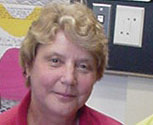Overview What happens when a long awaited neighborhood park finally opens? For the student television crew at a high school, just yards away from a newly dedicated park and a famous nineteenth century historic site, it's time for: community education, mentoring younger park buddies, and remembering former student Louis D. Brown a victim of violent crime. Students learn about neighborhood landmarks and reflect on the small and large histories of Millennium Park and its Brook Farm neighbor. As they make connections with park buddies at a local elementary school, they relay the importance of these sites and the kinds of behavior that make utopian communities. The final product - a documentary including student produced video footage, script writing and computer editing - is shared with their park buddies, the school community and neighborhood leaders. Producing public service announcements and shows for their school radio and TV stations, students promote public safety and parks for peace while discovering the impact of communication through multimedia.
|
Classroom
Activities
|
Community
Activities
|
Career
Activities
|
||||||||||||||||||||||||||||||||||||||||||||||||||
|
|
|
|
Learning Standards English Language Arts |
|
| • | Connect what is read with experiences and experiences of others. |
| • | Employ effective research & study skills. |
| • | Engage in historical analysis & interpretations. |
| • | Conduct effective discussions. |
| • | Make effective presentations. |
| • | Analyze, interpret & evaluate literature. |
| • | Understand and use the writing process effectively. |
| • | Understand and express different points of view. |
| • | Employ various conflict resolution strategies. |
| • | Employ various formats & technologies to complete and enhance work. |
|
School to Career Competencies |
|
| • | Practice Communication and Literacy Skills. |
| • | Organize and Analyze Information. |
| • | Problem Solve. |
| • | Use Technology. |
| • | Complete Entire Activities. |
| • | Act Professionally. |
| • | Interact with Others. |
| • | Understand All Aspects of the Community. |
| • | Take Responsibility for Career and Life Choices. |
Assessment Students and teacher periodically hold feedback sessions to evaluate and screen video footage. Written and oral presentations are assessed by Did I? documents with clearly established rubrics. Learning Festivals are reviewed by peers, teachers. Learning Festival feedback sheets are completed by visitors and evaluated by the entire team.
Software or Materials Used For timeline on web, Dreammaker software; for scripts & presentations: Clip Art, Freehand and other graphic tools; for video: camera and film; for project documentation: digital camera; for editing: nonlinear video Avid and MC Express technology. For background literature: Book List on Brook Farm.
Web Sites Parks for Peace Web Sites
Keywords Blithedale Romance, Brook Farm, Environment, Louis D. Brown, Mentoring, Millennium Park, Multi Media, Nathaniel Hawthorne, Public Safety, Service Learning, School to Career, Sophia Ripley, Transcendentalism, Utopian Community, Video
Final Words We have come full circle. Four years ago, Reduce~Reuse~Recycle Big Dig to Big Fill showed how our own backyard became a classroom. Now the park is a reality, and we are introducing youngsters to parks for peace and community building. Throughout it all, we've found that high schoolers produce top-notch work when they know it's for their younger peers.
Teacher Tip This project requires time away from the classroom so it helps to coordinate with other teachers in an interdisciplinary effort to make that off-campus time worthwhile. We worked with science teachers who covered environmental topics while I supervised video making. For more on science in the park see Wising up to Water ~ Simple yet Complex and Environmental Studies at Millennium Park.

E-mail contact Margaret Hoyt mhoyt@boston.k12.ma.us
Teacher Bio Margaret Hoyt teaches Television Production in the Media Magnet program at West Roxbury High School where her signature syllabus provides hands-on integration of English Language Arts skills and video/computer technology. A National Board Certified, English Language Arts /Young Adult teacher, she is also a Massachusetts Master Teacher, a Boston Lead Teacher and Mentor to several beginning teachers. Serving as member of the National Faculty, MetLife Fellow and honored as Boston's Human Rights Teacher of the Year, Maggie is liaison to Suskind Young at Arts, the Wang Center in Boston. After nearly thirty years of teaching, this web advisor for the Teacher's Network still loves her profession because kids and the arts are her passion.
Subject Areas English Language Arts & Technology
Grade Levels 9 - 12
Students Inclusive
